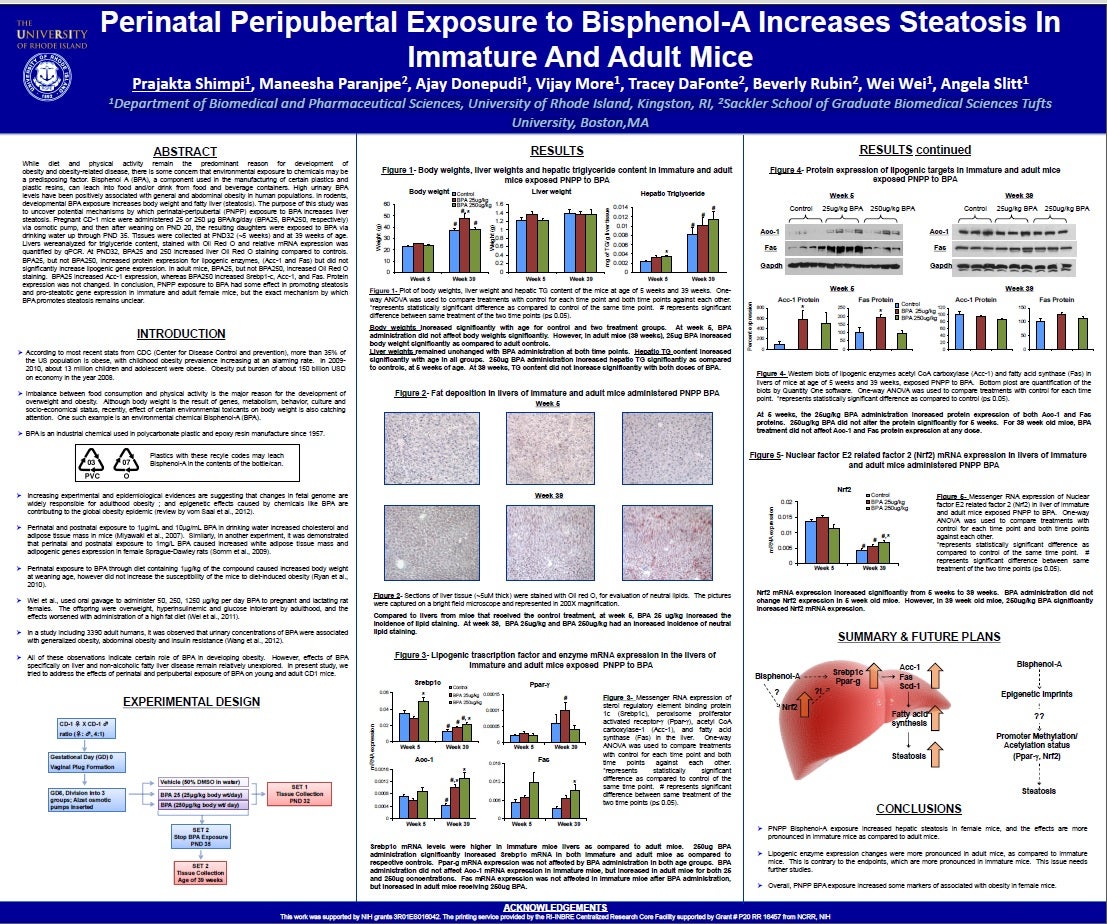- Presented at the 52nd Society for Toxicology Meeting, March 2013
- Prajakta Shimpi(1), Maneesha Paranjpe(2), Ajay Donepudi(1), Vijay More(1), Tracey DaFonte(2), Beverly Rubin(2), Wei Wei(1), Angela Slitt(1)
Research
While diet and physical activity remain the predominant reason for development of obesity and obesity-related disease, there is some concern that environmental exposure to chemicals may be a predisposing factor. Bisphenol A (BPA), a component used in the manufacturing of certain plastics and plastic resins, can leach into food and/or drink from food and beverage containers. High urinary BPA levels have been positively associated with general and abdominal obesity in human populations. In rodents, developmental BPA exposure increases body weight and fatty liver (steatosis). The purpose of this study was to uncover potential mechanisms by which perinatal-peripubertal (PNPP) exposure to BPA increases liver steatosis. Pregnant CD-1 mice were administered 25 or 250 μg BPA/kg/day (BPA25, BPA250, respectively) via osmotic pump, and then after weaning on PND 20, the resulting daughters were exposed to BPA via drinking water up through PND 35. Tissues were collected at PND32 (~5 weeks) and at 39 weeks of age. Livers wereanalyzed for triglyceride content, stained with Oil Red O and relative mRNA expression was quantified by qPCR. At PND32, BPA25 and 250 increased liver Oil Red O staining compared to controls. BPA25, but not BPA250, increased protein expression for lipogenic enzymes, (Acc-1 and Fas) but did not significantly increase lipogenic gene expression. In adult mice, BPA25, but not BPA250, increased Oil Red O staining. BPA25 increased Acc-1 expression, whereas BPA250 increased Srebp1-c, Acc-1, and Fas. Protein expression was not changed. In conclusion, PNPP exposure to BPA had some effect in promoting steatosis and pro-steatotic gene expression in immature and adult female mice, but the exact mechanism by which BPA promotes steatosis remains unclear.
Related People: Angela Slitt
(1)Department of Biomedical and Pharmaceutical Sciences, University of Rhode Island, Kingston, RI
(2)Sackler School of Graduate Biomedical Sciences Tufts University, Boston,MA

